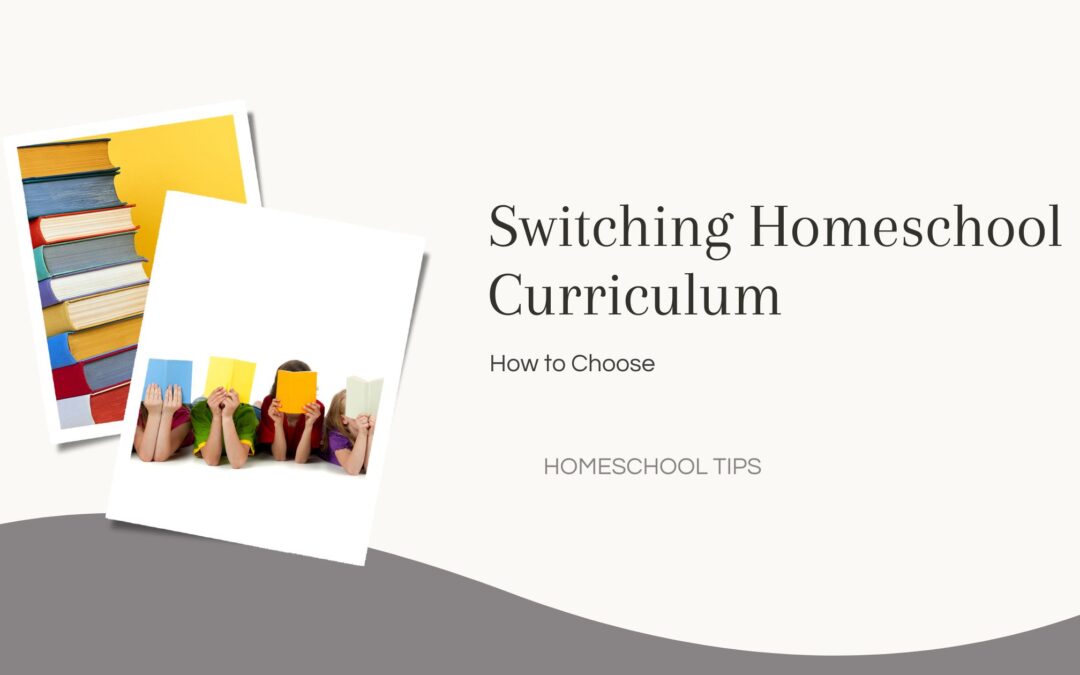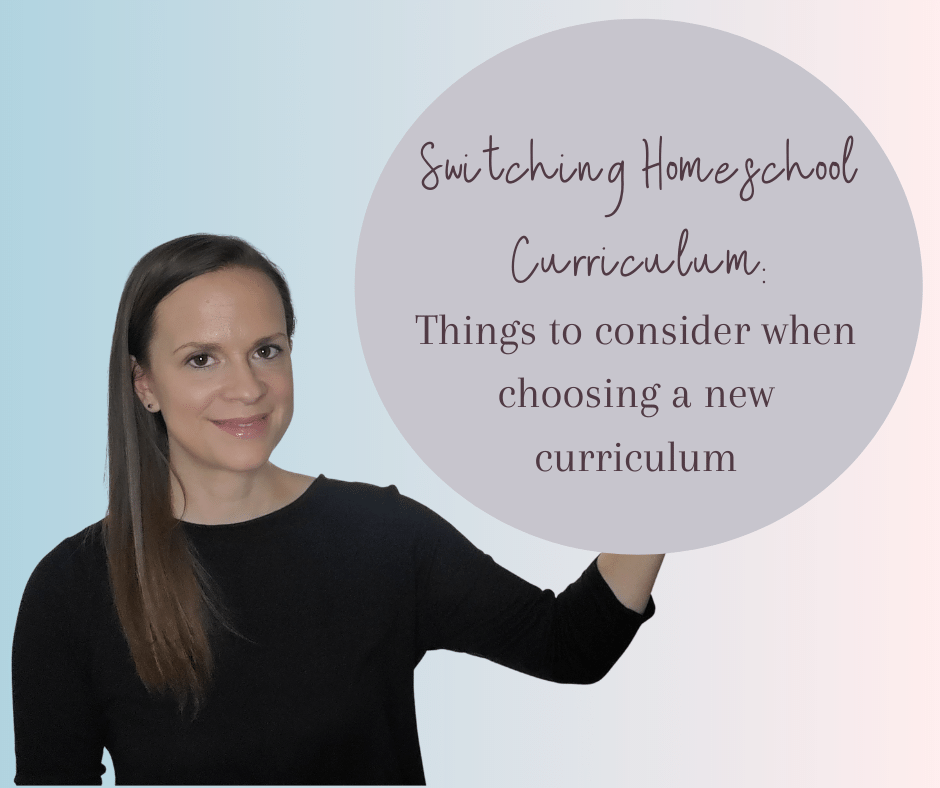If you’ve read my post Switching Curriculum: Why It’s Okay and Even a Good Thing and you’ve decided it’s time to make a switch, the next step is to figure out how to switch curriculum. Making the decision to do it is just the first step, now there are more things to consider as you decide what to use.
This post contains affiliate links, including Amazon associate links. If you purchase through my links, I may be compensated. Thank you for supporting this site! You can read my affiliate and advertising disclosure here.
Homeschool Curriculum Options
There are so many options available to homeschoolers and it’s impossible to use them all (believe me I’ve tried). How do you make the best choice with so many great options available? Read on and find out how to make the right choices for switching your homeschool curriculum.
Choosing Homeschool Curriculum: Evaluate What is Working and What is Not
This one can seem obvious, but it is important to take stock of what is working or not working and why. Even if something is working it’s okay to change if you want to try something new. Identifying why something is working will help you choose something new because you can make sure those components are present in your new curriculum.
Likewise, by identifying what is not working, you can avoid the same pitfalls when switching to a new curriculum. Knowing what isn’t working for your child can give you a greater chance of success with your new curriculum.
Some common reasons why a curriculum is not working:
- Lessons are too long
- Curriculum moves too fast
- Not enough color
- Too dry or doesn’t hold the student’s attention
- Parent intensive
- Too independent
- Doesn’t explain concepts well
- Not the right homeschool styles for your family.
Consider a Different Homeschool Style
Just as our needs in life change with different seasons, so do our homeschool needs. You can start with a certain homeschool style, but a you grow more confident as a homeschooler you may find you have different curriculum needs in a different season. Don’t just look at what style you have use for homeschooling in the past, but think about where you and your kids are right now and maybe your homeschool style needs to change. Maybe you’ve done a Charlotte Mason approach but as you are growing more confident as a homeschooler you want to try unit studies. Really think about if the style you are using is working for you. Keep in mind, you are never married to one style of homeschooling. You can try a style now and change again next year. Always be open to make a change.
Consider What You Want Your Homeschool Curriculum to Accomplish
Curriculum is just a tool and I don’t believe in giving it a higher place than that. I don’t believe that curriculum should be used to be our children’s spiritual guide, career adviser, or health coach. The sole purpose of curriculum is a tool to teach academics to our kids. I don’t think we are keeping curriculum in its rightful place if we are expecting some kind of magical tool that does it all. Keeping that in mind, consider the things in a curriculum that are important to you.
Questions to ask yourself about what you want curriculum to accomplish:
Do I want an academically rigorous curriculum?
Is art and beauty in a curriculum important to me?
Am I wanting hands on projects scheduled for me?
Would I like a religious based curriculum?
Does my curriculum need to be more light hearted and fun?
Is there a certain subject I want to focus on more (i.e. a history heavy or literature based)?
Asking yourself a few simple questions can help you keep your curriculum expectations appropriate and will help guide you into deciding what you want your curriculum to accomplish.
Read or Watch Honest Homeschool Reviews
There are so many curriculum reviews out there in internet land. The only ones that I would advise you to avoid are from people who say they will never give a negative review. While I understand that it can hurt a blogger or vlogger’s chances of getting sponsorships, I don’t know how you can actually give an honest review without ever stating anything negative. Always look for people who will tell it like it is, the good and the bad. Learn from both critics and fans of a curriculum. What one person sees as a negative, might be the exact thing you are looking for.
I have a curriculum reviews section on this website that I am working on adding to as I can, and I really appreciate the amount of curriculum reviews on Cathy Duffy’s site.
Take Placement Tests
There can be major differences in levels from curriculum to curriculum. One publisher’s third grade level can be similar to another’s first grade level. Make sure to have your kids take placement tests offered by the specific publisher before you purchase your new curriculum. This specifically applies to skills subjects like math and reading. Put them in whichever level they test into even if it is below their current grade level. Don’t worry about a number on a book. Giving your kids an appropriate level of challenge for them is the most important thing.
Ask Me About Homeschool Curriculum
If there is ever a curriculum you are curious about, ask me. I have a little bit of a curriculum obsession, and chances are if I haven’t used something I have looked at it extensively. You can ask me in the comments on this post, on my Facebook or Instagram, or fill out the contact form on this site. I am happy to help you make your curriculum decisions.
Here are a few of my most popular homeschool curriculum reviews:
History Quest from Pandia Press – My Homeschool with a View
Beautiful Feet Books: Modern American and World History
Elementary U.S. Geography and Social Studies – Master Books
My Experience with Sonlight Returns – My Homeschool with a View





